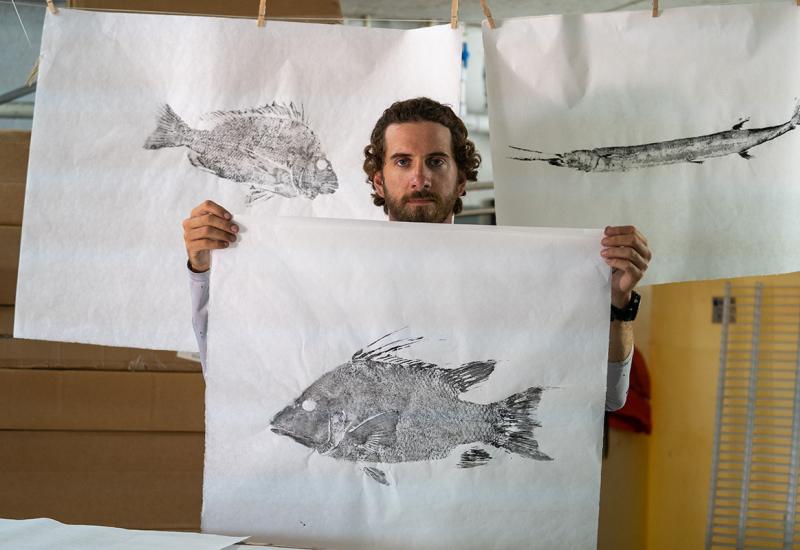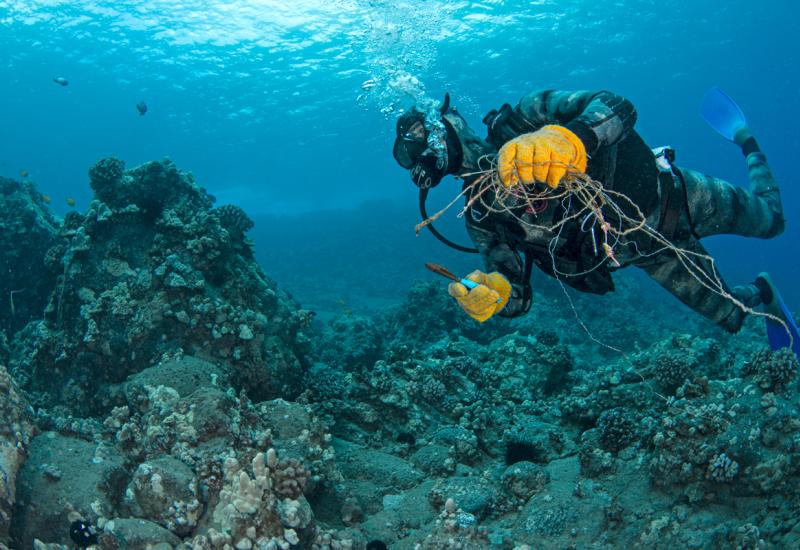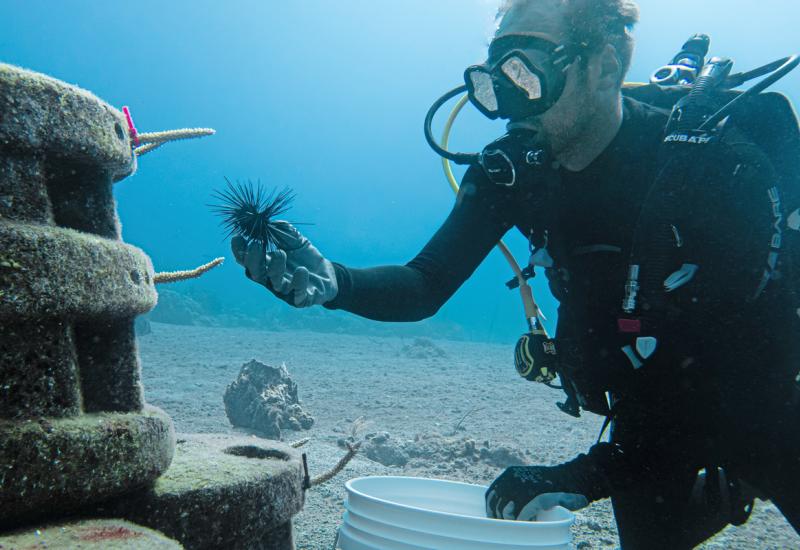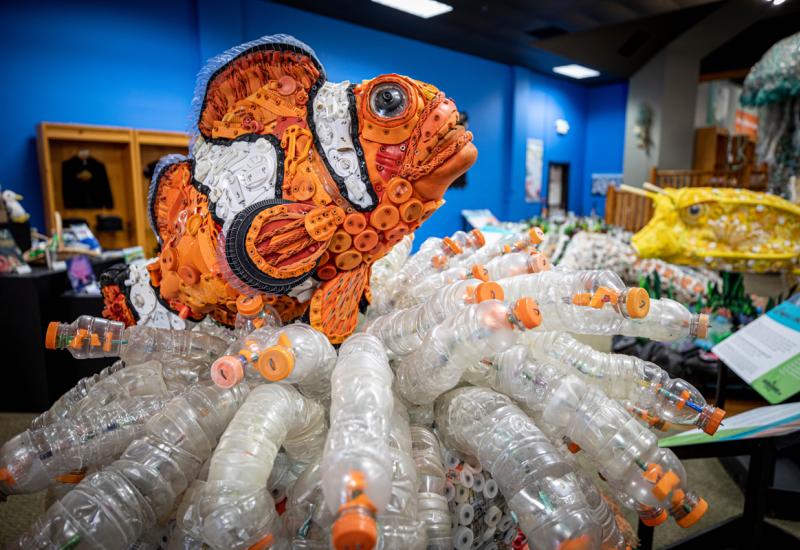How to Take Photos that Help Protect the Ocean
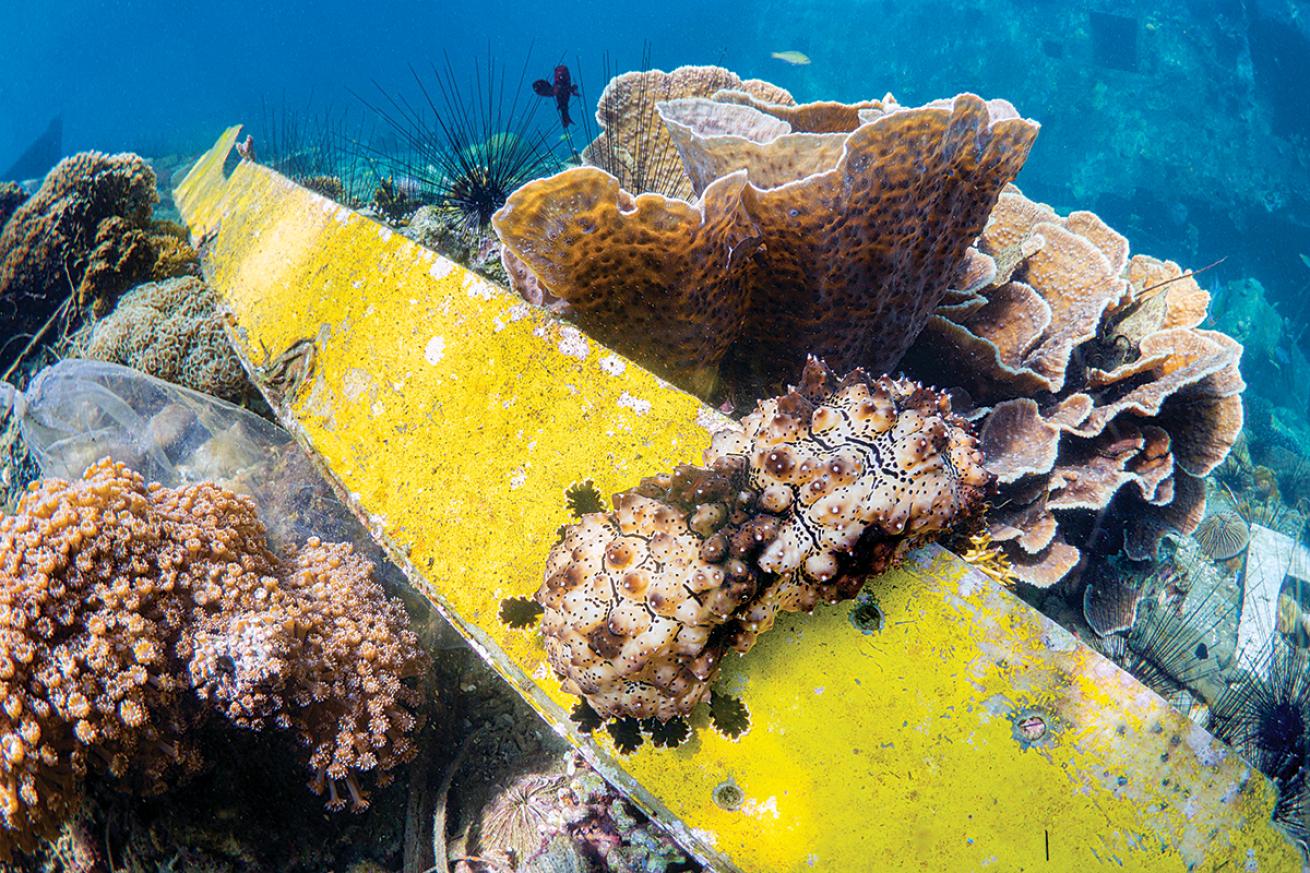
Alex MustardFor years, photographers would only aim their cameras at the prettiest reefs; now it’s important to also show the problems.
There must be very few divers who are not seriously concerned for our oceans. Corals are suffering, kelp is disappearing, stocks are overfished and big animals are far, far less common than they once were. Our planet is only so big, and with 7.7 billion people demanding its resources, there can be no surprise that we’re squeezing nature out. A staggering 96 percent of all mammals on Earth (by weight) are either humans or our livestock—wild mammals account for just 4 percent. We catch 100 million sharks each year; scientists estimate that 90 percent of all large ocean hunters are gone. Our carbon emissions already are fundamentally changing the planet’s climate and many ocean ecosystems, from sea ice at the poles to the coral kingdoms of the tropics.
A lot of underwater photographers are motivated to help sway hearts and minds to the oceans’ cause. And we are well placed to help, by producing images that remind people what is at stake and by startling them with pictures that encourage a change in behavior. Photographs have underpinned just about every successful environmental campaign, and these days reach even more people through traditional media and social media. However, to maximize our impact, we must combine attention-grabbing photography with a clear vision for the message we want to communicate.
TIP 1: Know Your Audience
Effective conservation photography rarely happens by accident. You can greatly improve the power of your pictures with preparation, considering ahead of time the factors that will give your images impact. The two most important are the audience you want to connect with, and the message you want them to take away. These will dictate what and how you shoot.
Different types of conservation images work with different types of people. Some shots might be aimed at fellow divers, while others are intended for the wider ocean community; some are for the general public, who know little about the underwater world. Consider how differently you might present the plight of sharks, for example, to these three groups. Shark-loving divers might be shocked into action by shots of a dead shark with its fins hacked off, while the general public might be better swayed by a sympathetic image celebrating the beauty of a shark in the wild. A common mistake is shooting conservation images that don’t work outside our own echo chambers.
The second factor is what you want to communicate. These can be very simple messages—in fact, simple is usually best—such as “We are fishing too much” or “Plastic harms marine life.”
The challenge is to capture this in a picture that is eye-catching and attention-grabbing. You should also try to pour your feelings into the shot—the goal is to make the viewer feel as you did when you were there.
Another tip I use to create images with the right message is to imagine I’ve got a commission from one of the big ocean charities, to shoot for one of their existing campaigns. These organizations will have conducted detailed meetings to focus on the most important problems and to figure out the best solutions to communicate to the public. Fitting in with these campaigns means your image is more likely to successfully share the critical message and connect with an audience.
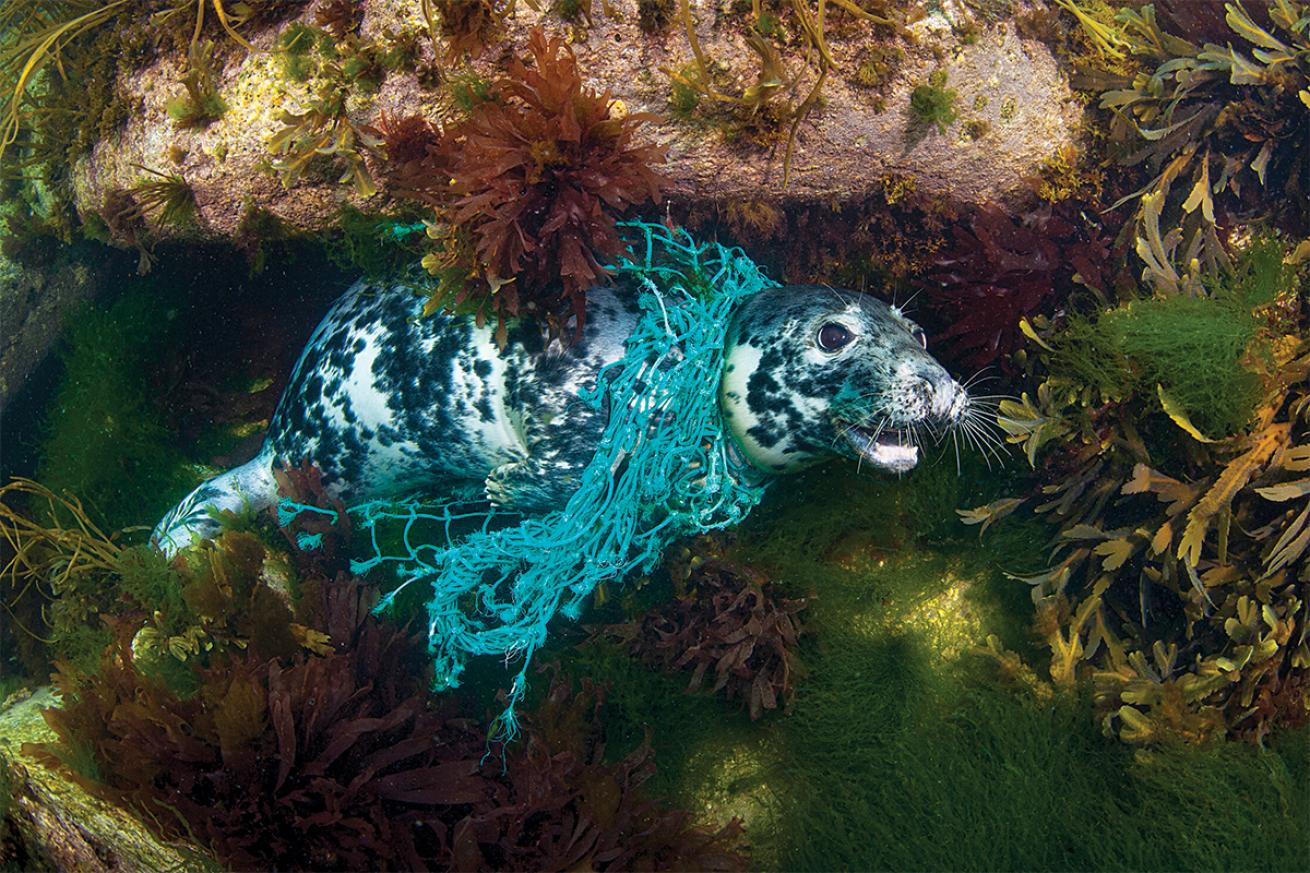
Alex MustardThis seal was rescued after the shot was taken.
TIP 2: Important Issues
To get our images working for the oceans, we first need to figure out the issues that we are best placed to fight. Partly this will come from the issues that you care most deeply about, because you will always go the extra yard when you’re passionate about the subject. Partly it will come from what subjects and issues you have access to. Although many conservation issues are global problems, the solutions often lie at an individual or local scale; never undervalue the importance of highlighting local issues.
Some issues are relatively easy to communicate through still images, such as ocean plastic pollution. Others, like overfishing, work well as images but the opportunities to get our camera in front of them is much harder. Finally, some issues, such as ocean acidification, are much more difficult to communicate with an underwater still image.
While plastic pollution is horribly widespread in the ocean, I see a proportion of plastic pictures that are setups, with brand-new bags and bottles thrust in front of animals. Some argue that these images cause no harm to the animals and serve the greater good, but I think the conservation message is stronger when the photos are authentic.
Nonetheless, we shouldn’t give up on these issues.
TIP 3: Keep Hope Alive
If we constantly peddle doom and gloom, we desensitize our audience or, worse, make them give up on the oceans. Positive stories and celebratory images are an important part of conservation photography, and there are lots to tell. Across the world there are a growing number of marine protected areas; properly enforced, they invariably make a difference to the numbers of fish, the health of the ocean and the productivity of regional fisheries. Parts of our oceans are thriving, and there is good news where species such as humpback whales or groupers bounce back.
We should celebrate marine protection, such as when countries like the Bahamas and Palau declare their waters shark sanctuaries. And we should draw attention to recovery: Caribbean coral took a big hit at the start of the 1980s, yet in places there is solid recovery going on, increasingly aided by coral propagation projects.
All around the world there are people dedicating themselves to the ocean, and their stories need telling, providing uplifting imagery that communicates the conservation message.
To keep our audience engaged we need to use both the stick and the carrot to get the marine conservation message across.
More Photo Training:

